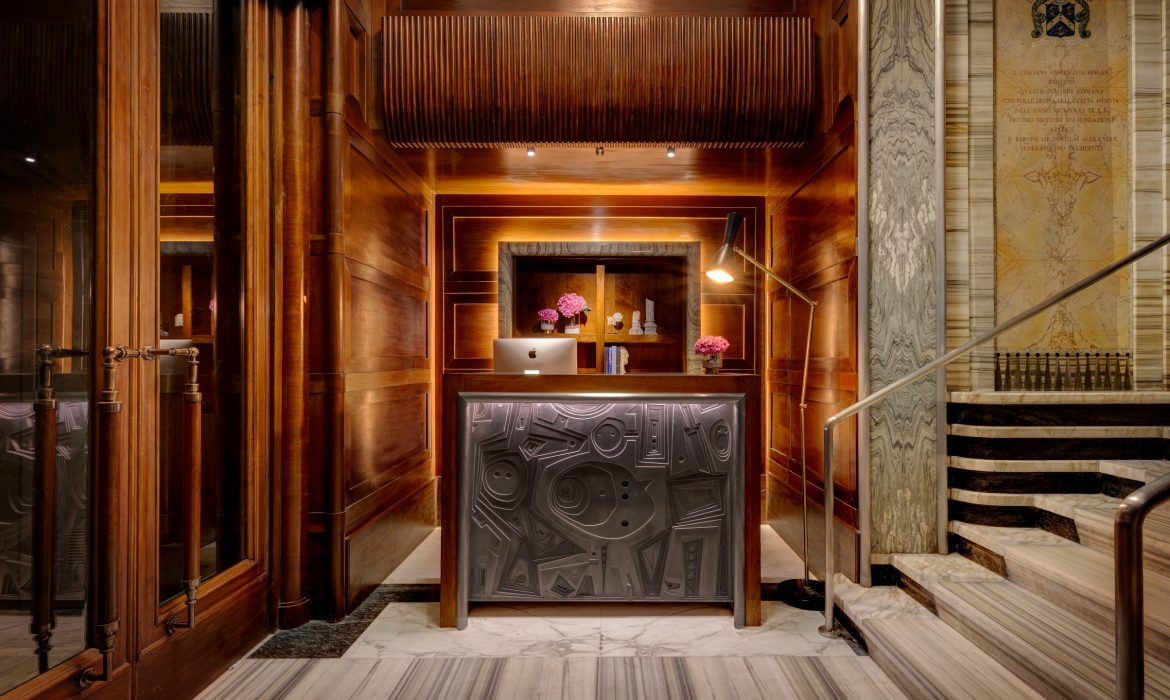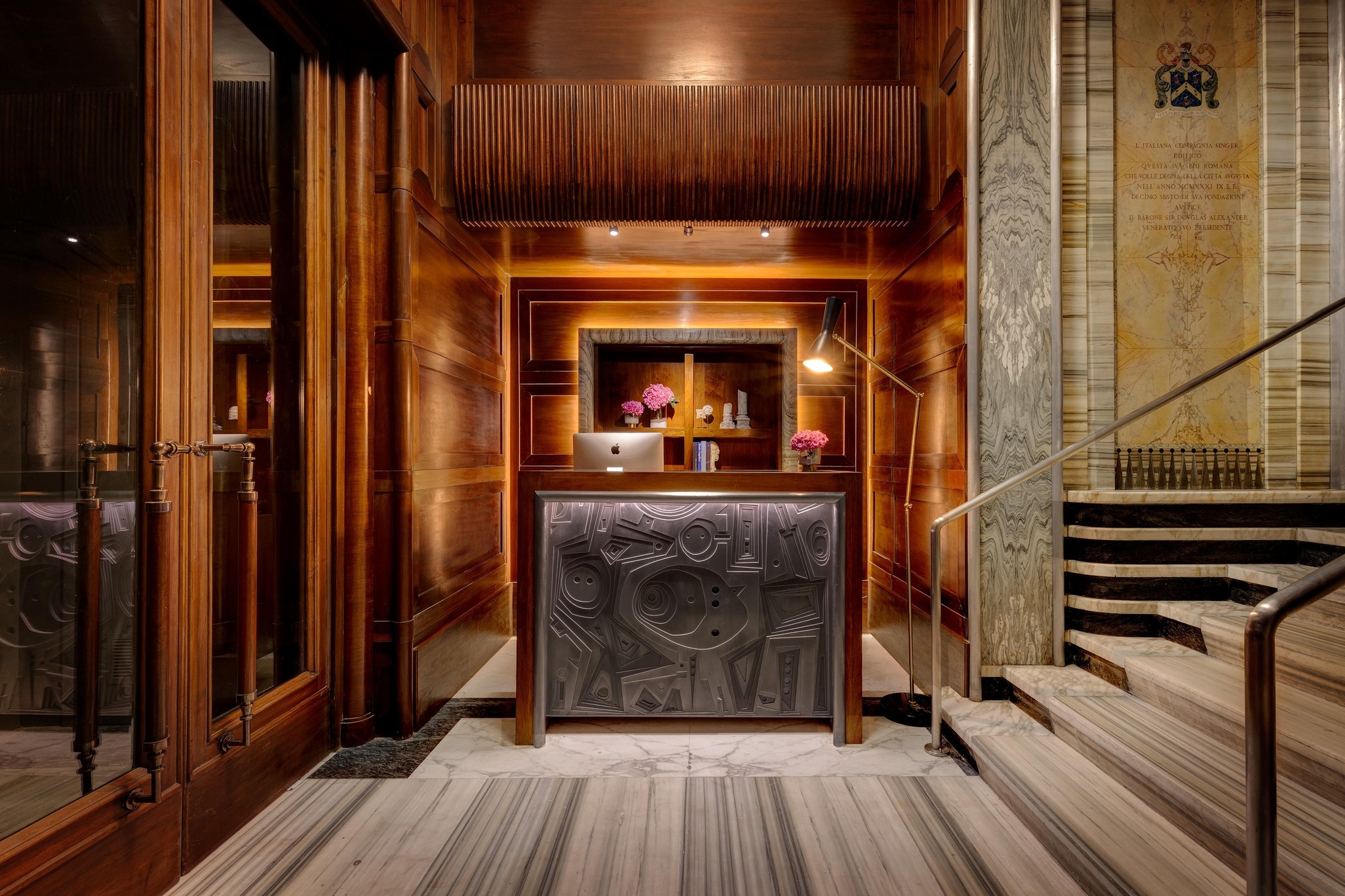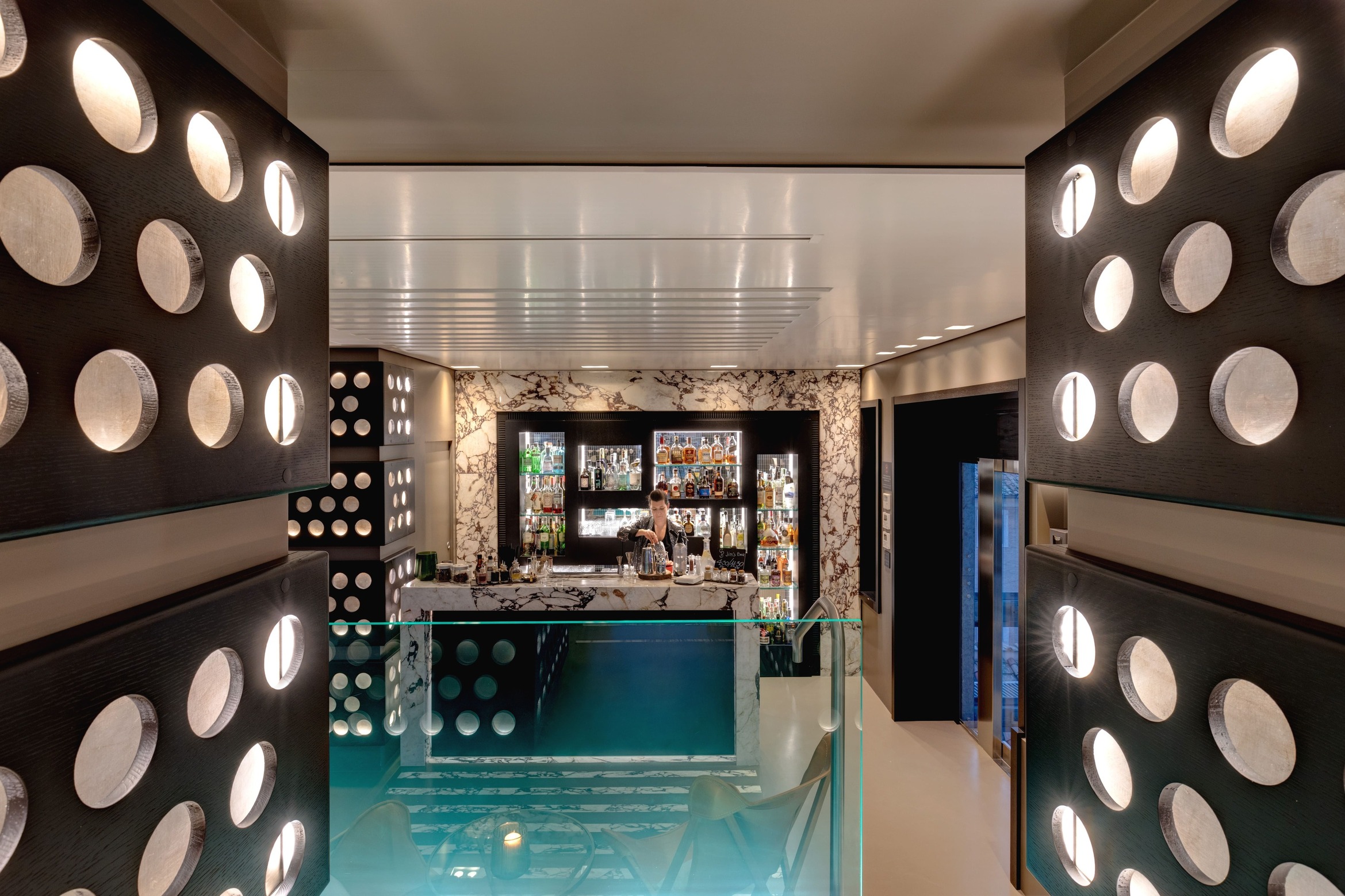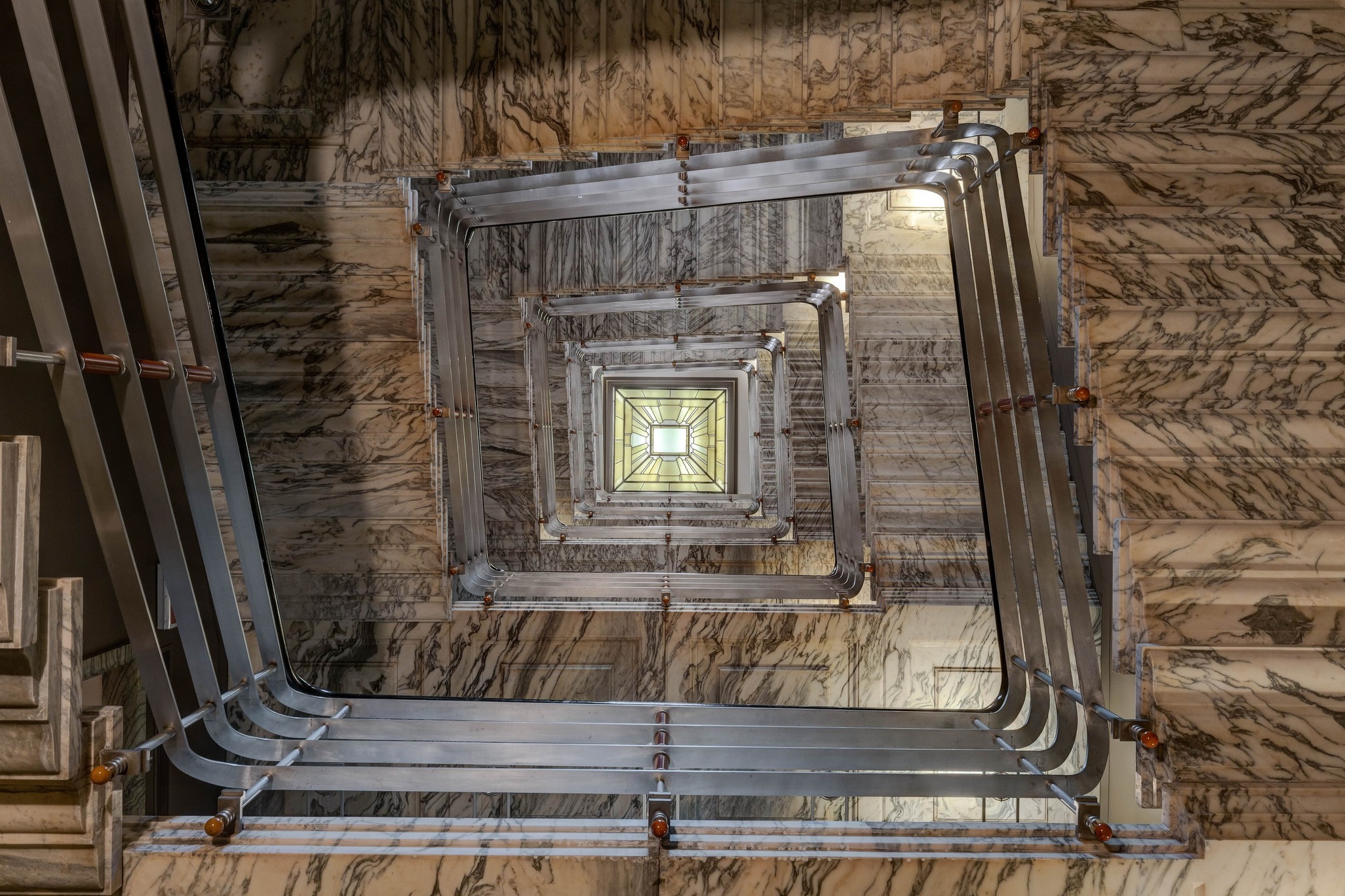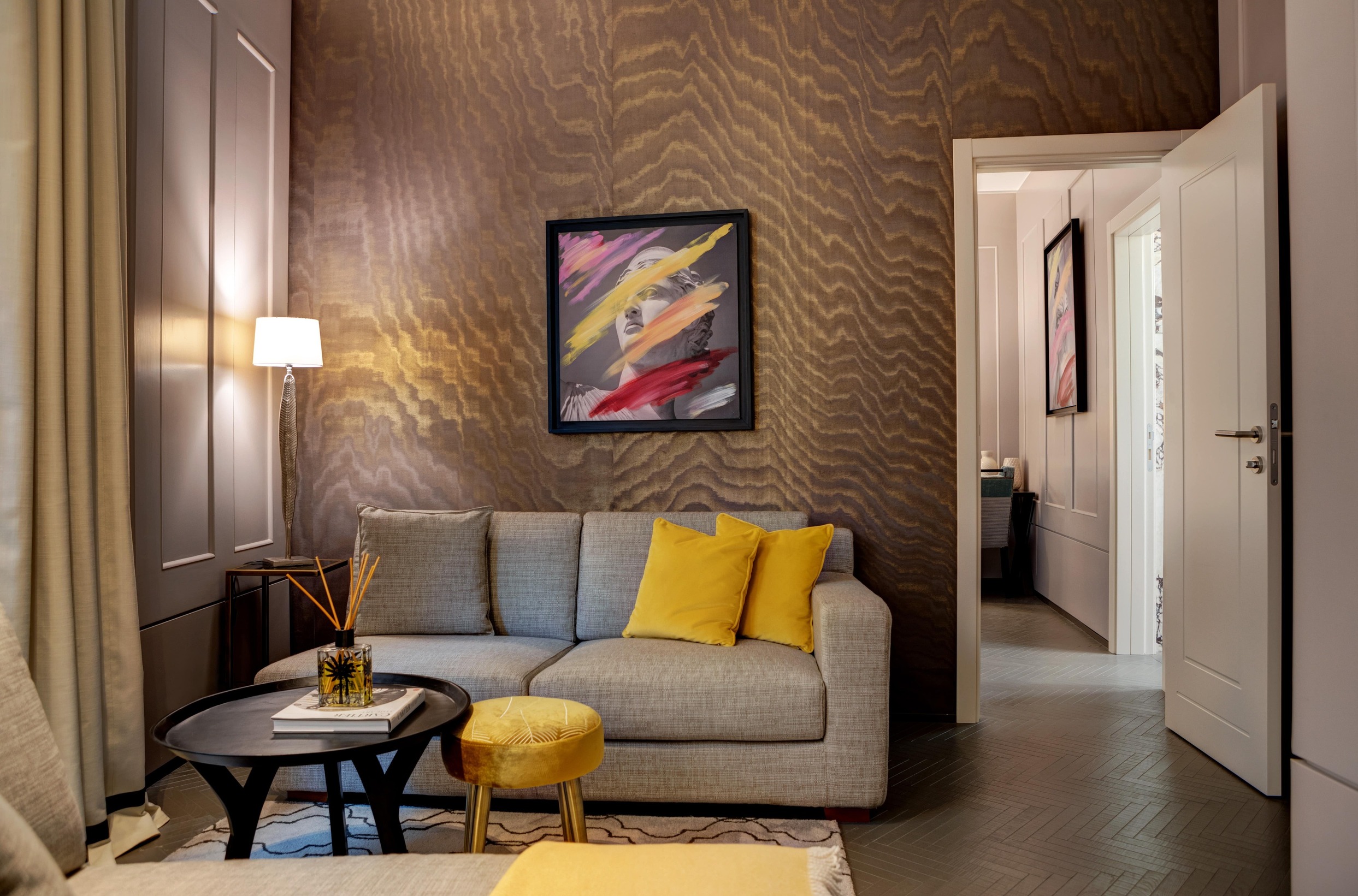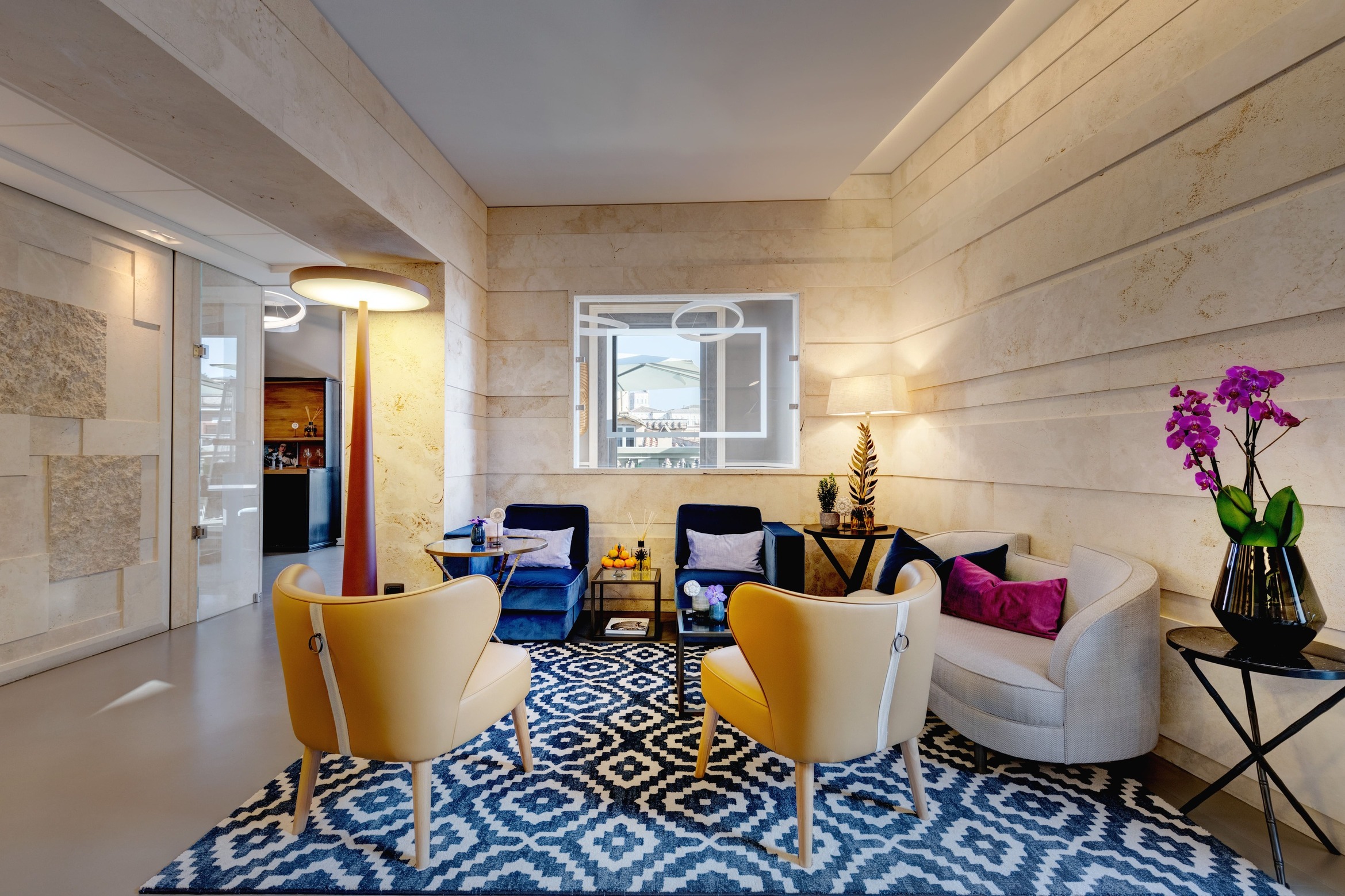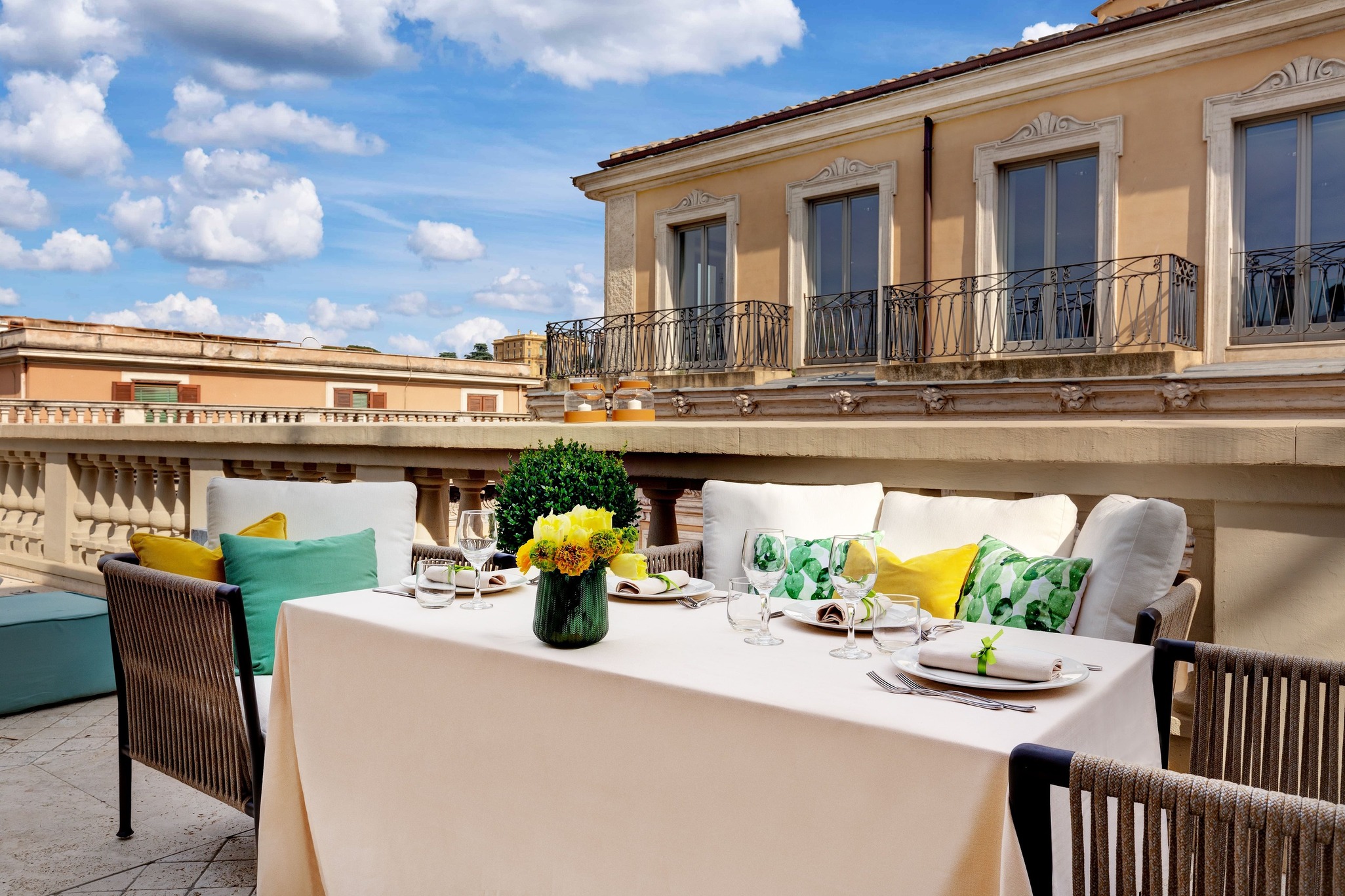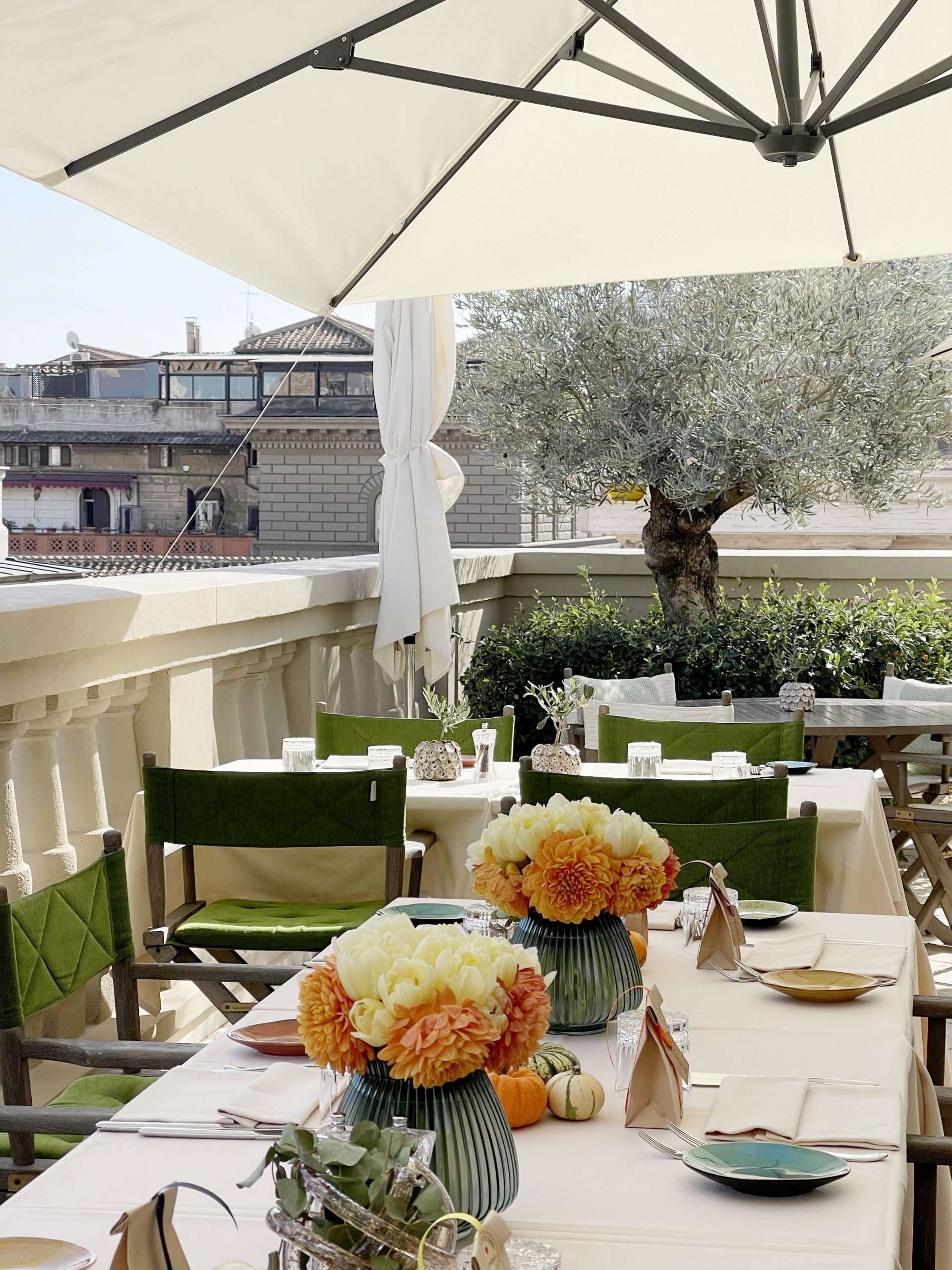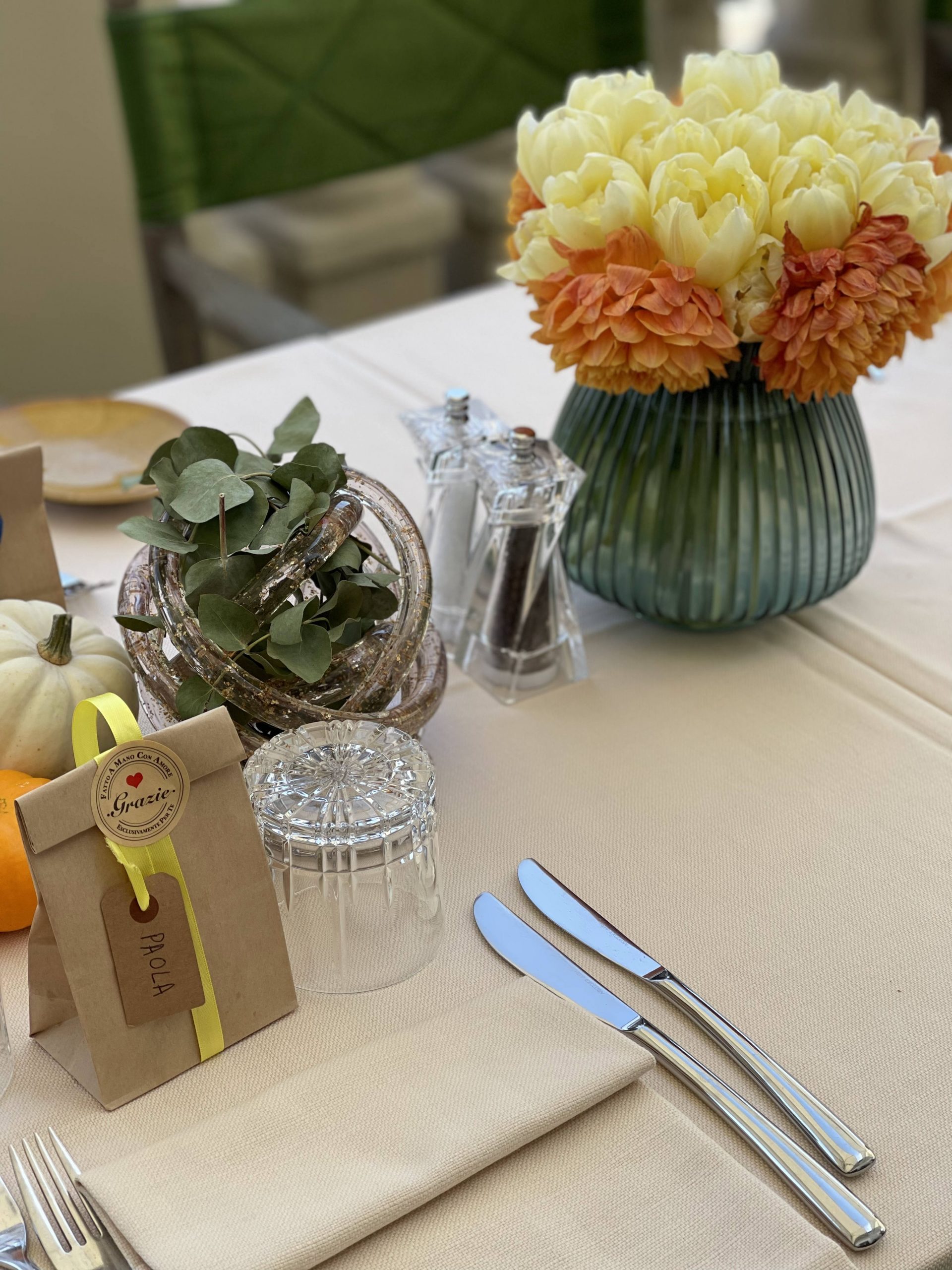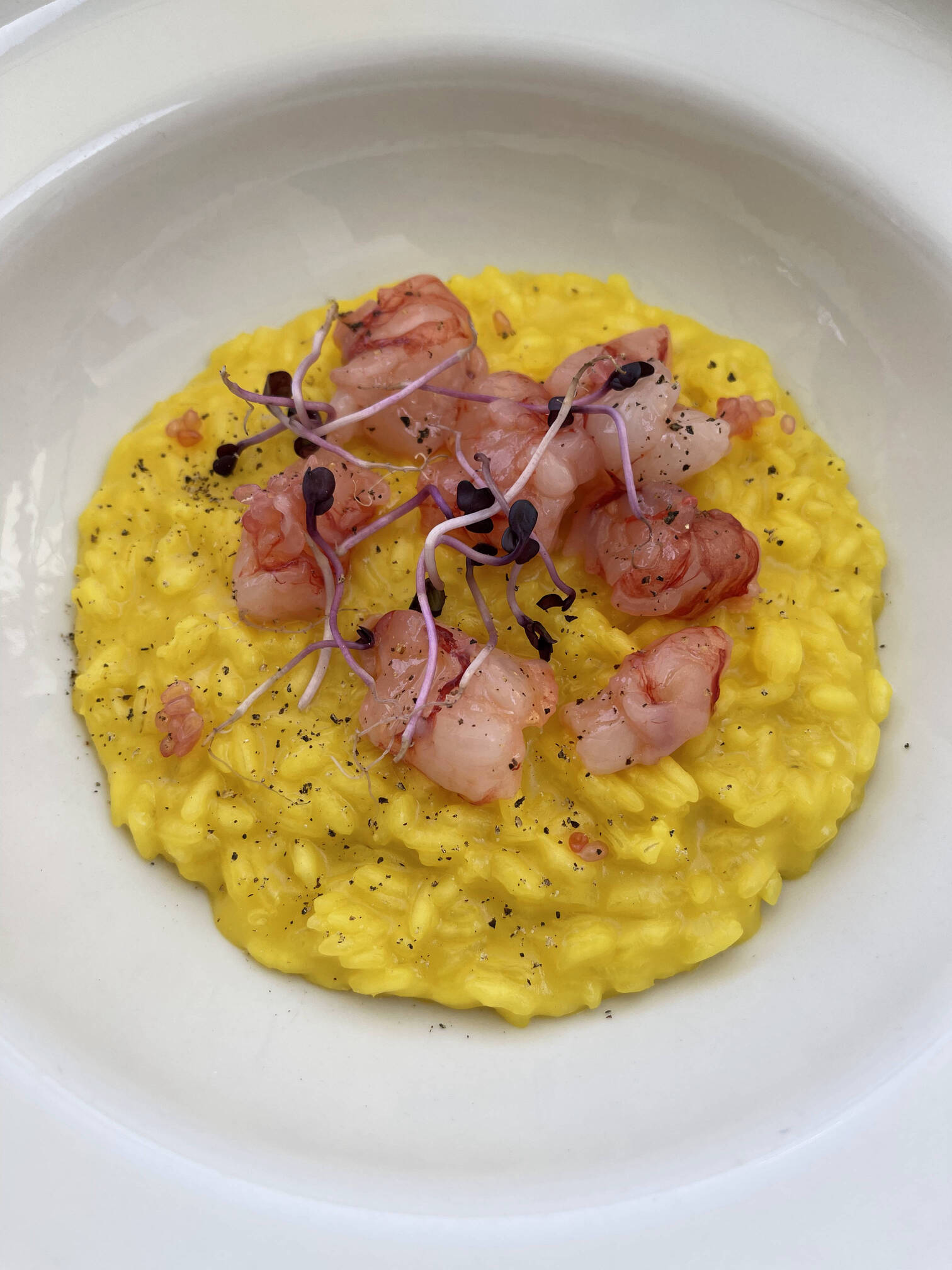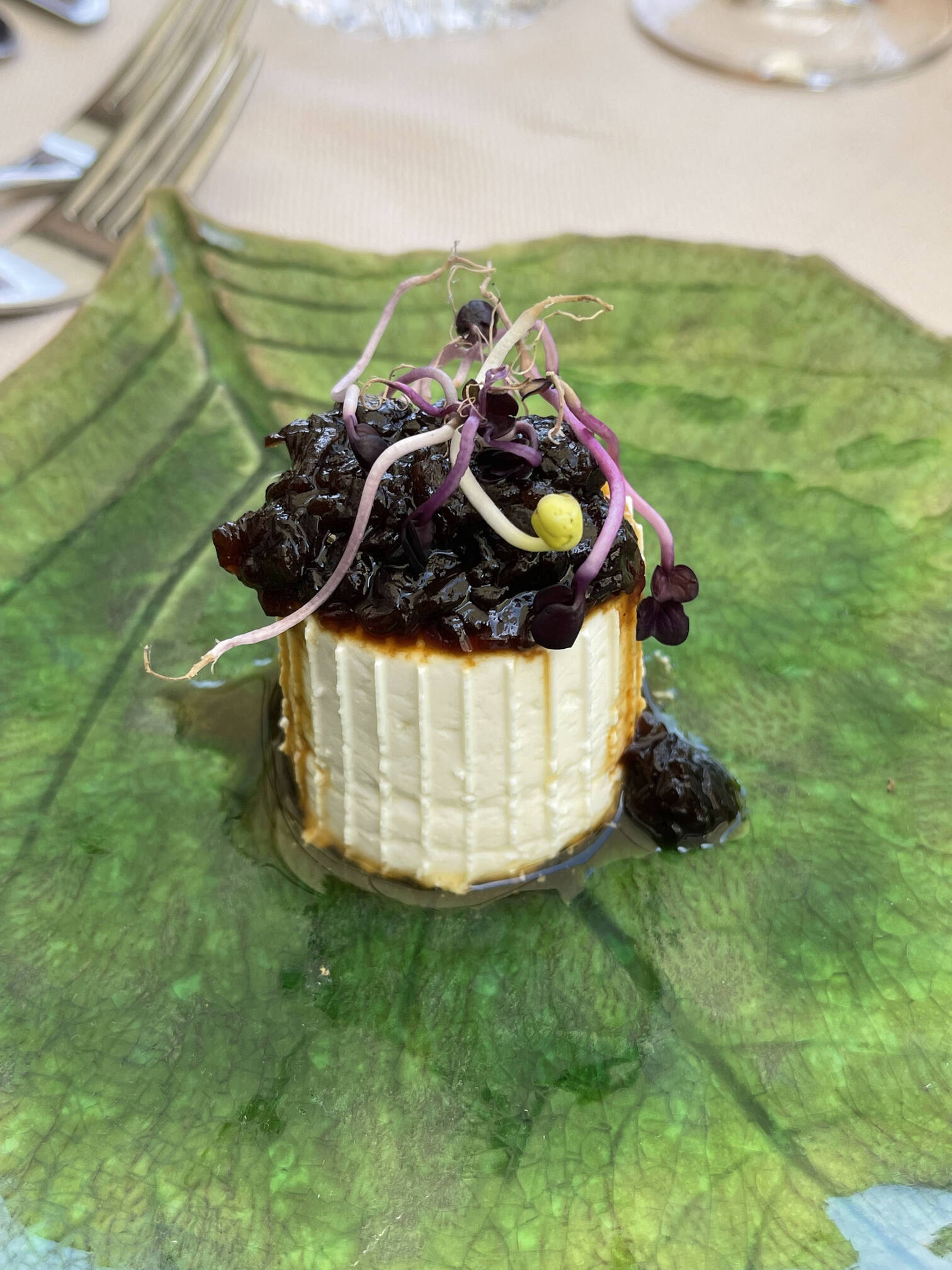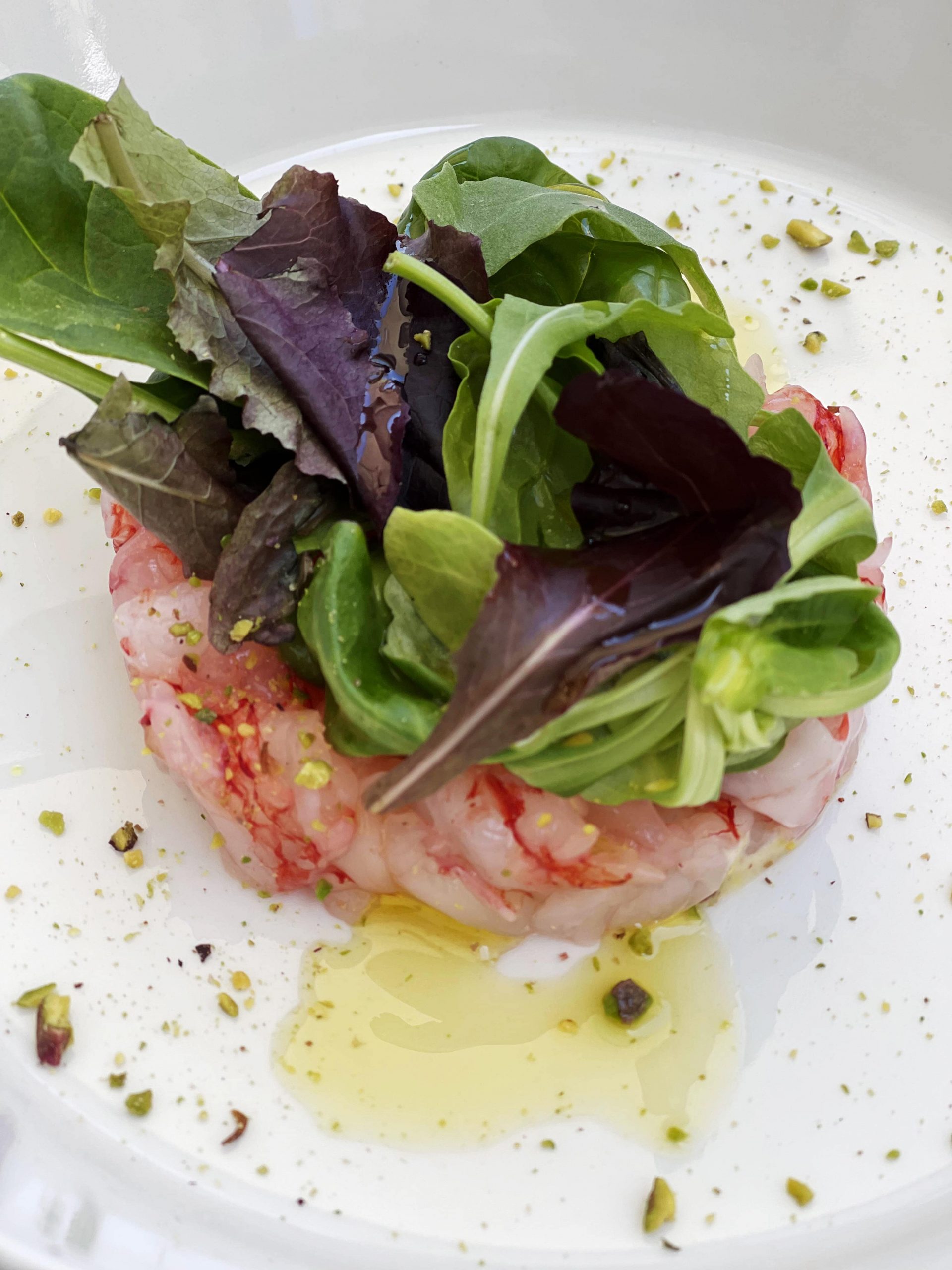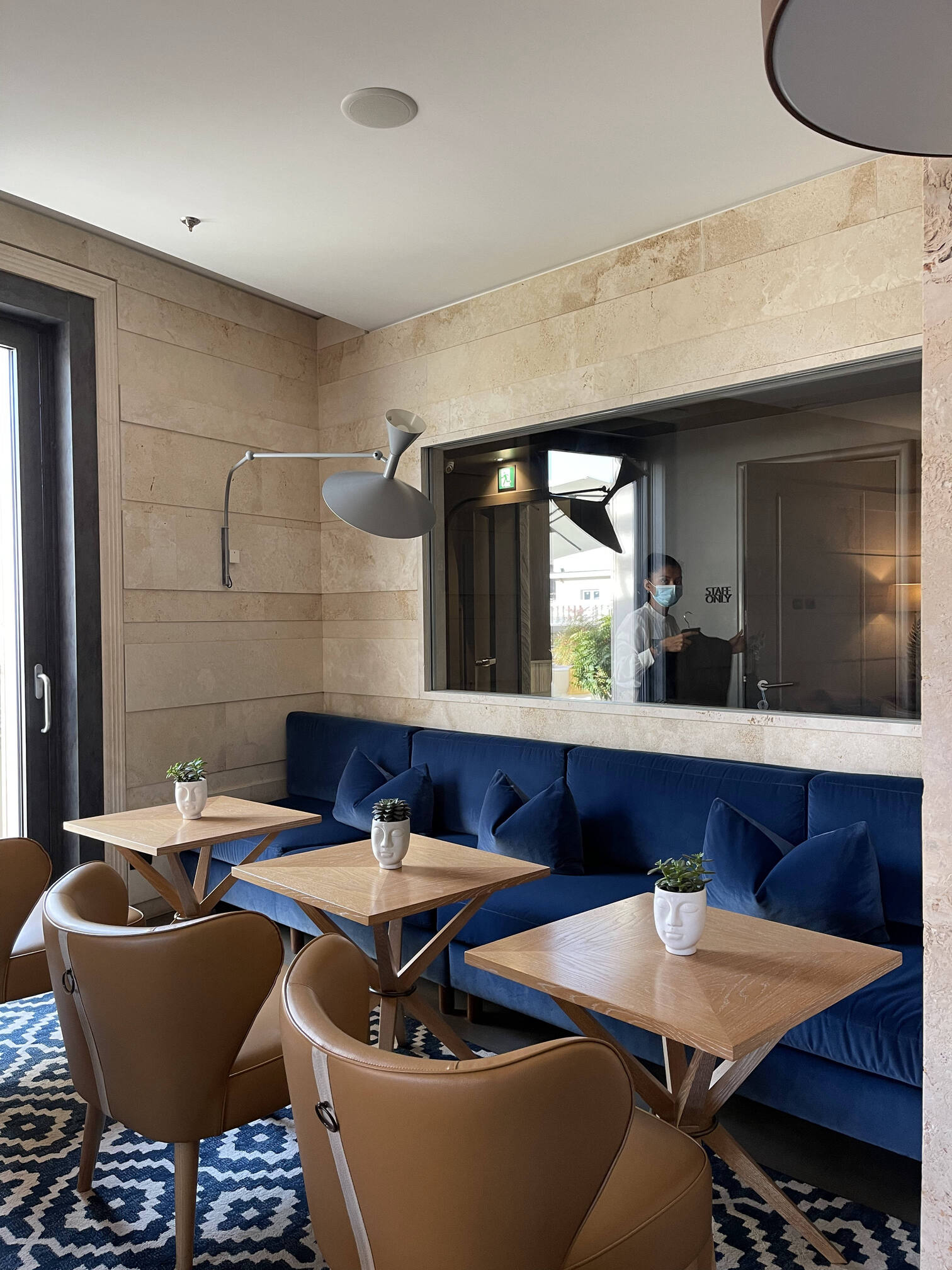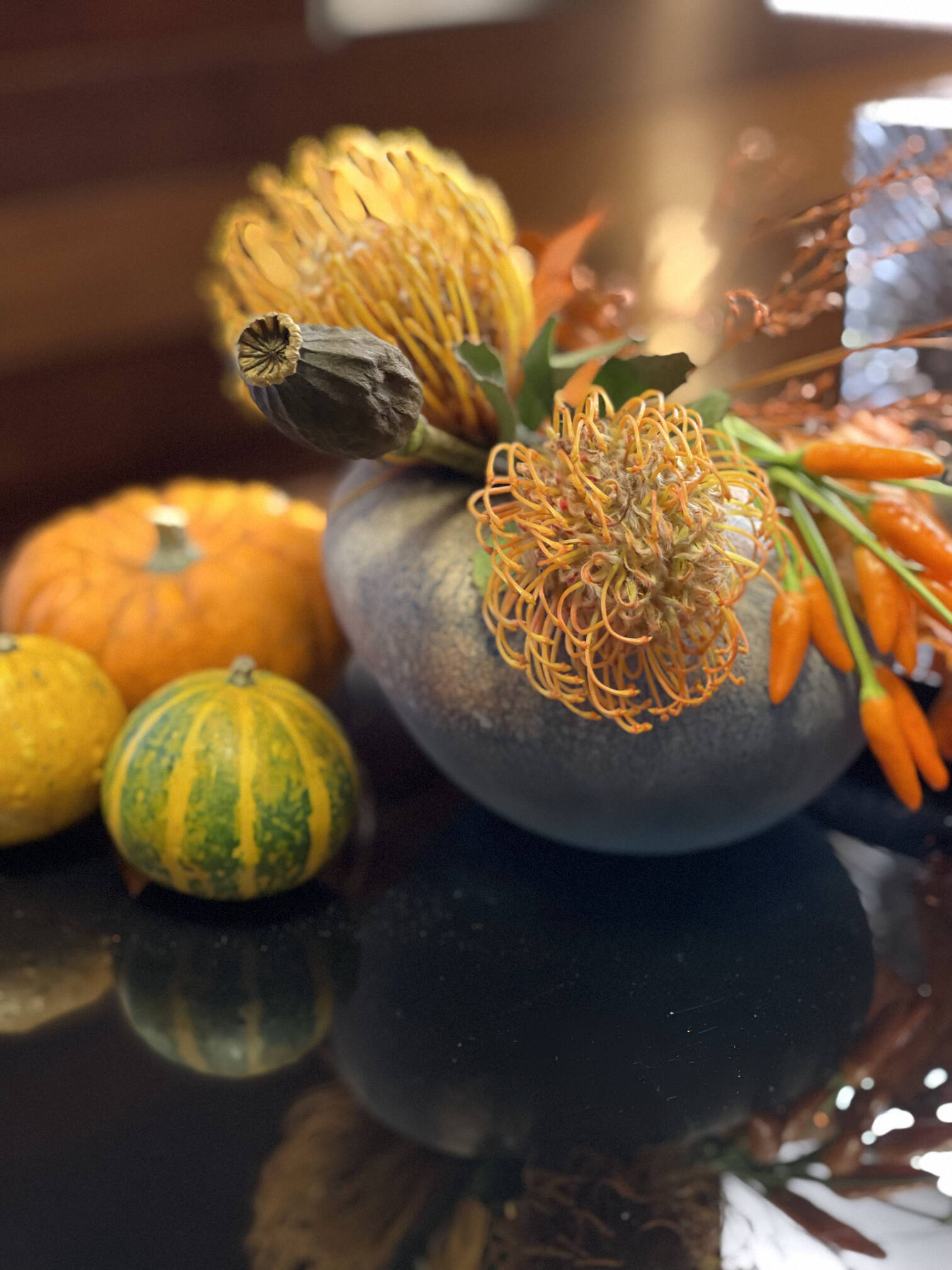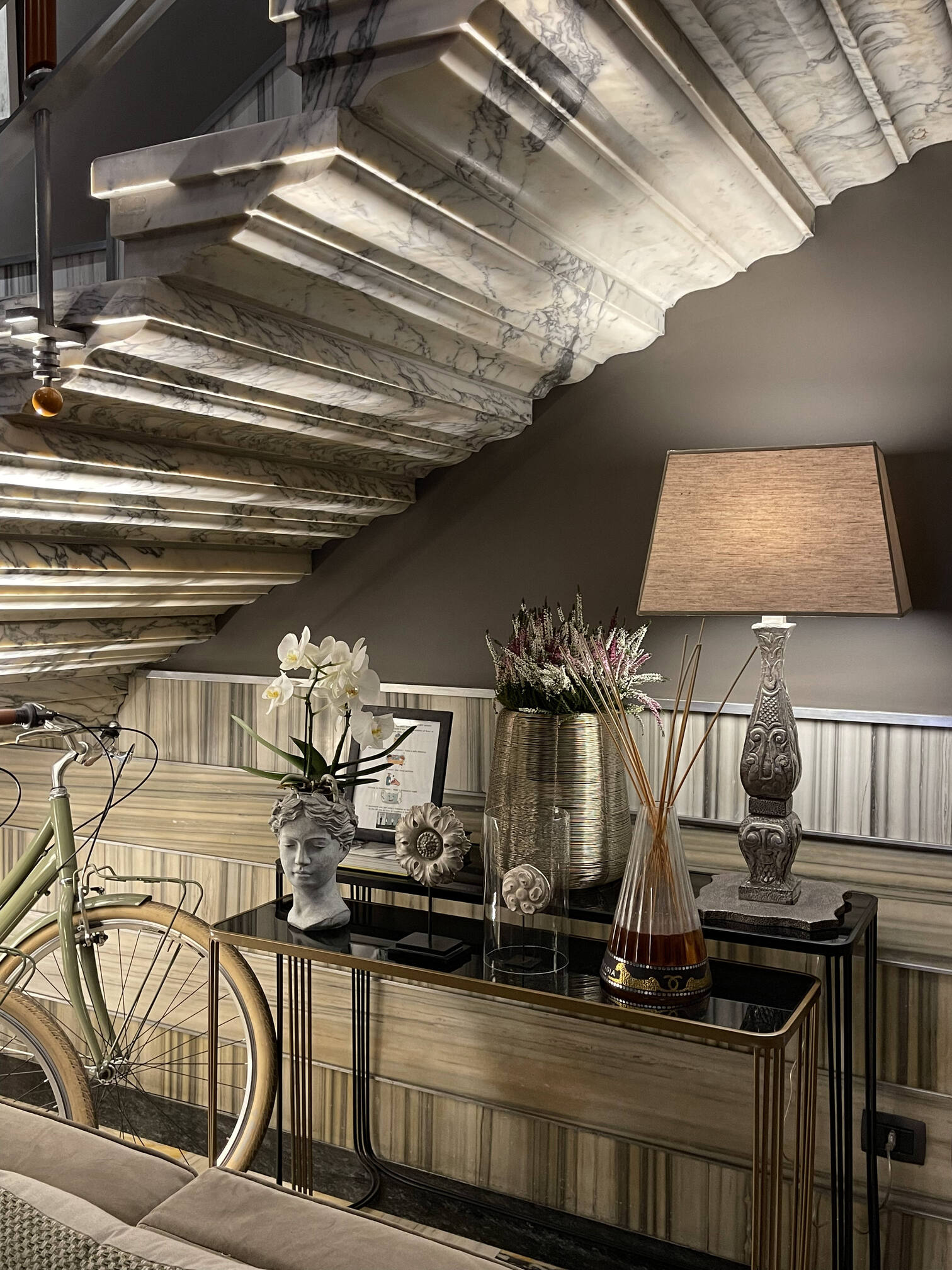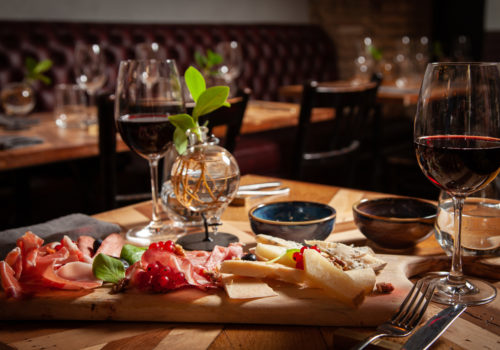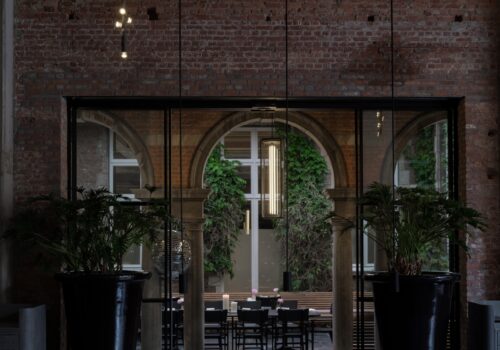From the headquarters of a company known for manufacturing sewing machines to a boutique hotel
Built in 1930 as the headquarters for the Compagnia Italiana Singer, the American sewing machine manufacturer, it was featured in the architecture magazine Domus in 1932 for the stair designed by architect Mario Loreti. Today it is the Singer Palace Hotel, «a home and not a hotel», designed down to the last detail by the Visocchi family, a resort in Rome just steps away from Via del Corso. A large private residence where luxury and service are fundamental values, a gem of Art Decò embedded into the heart of Rome: a 5-star hotel that stands out among the newly-opened establishments in the heart of the capital.
The boutique hotel has around thirty bedrooms, which can easily be grouped and adapted for flexibility. The interiors feature cotton, velvet and linen fabrics of the highest quality and manufactured in Italy, and wood flooring: the elegance of a modern touch in a historic building.
On the fifth floor, overlooking the rooftops of Rome, is the restaurant that prepares dishes for breakfast, lunch and dinner. Directing it all is Alessandro, a thirty-five year-old who cut his teeth in the Visocchi establishment (first in Fiuggi and then in Rome), who was born in Ciociaria and has a great passion for cuisine. Alessandro is the chef at the Singer Palace Hotel, but he also manages the kitchen at Tenuta Giustiniana, a location for events immersed in the greenery of the Parco di Veio.
Inside the hotel, on the top floor with a unique view, is Jim’s Bar, a rooftop bar offering cocktails from the 1920s, along with an original revisitation of the great classics.
Hospitality and lifestyle, to highlight the history and culture of the place. 90 years have gone by, its fuction has changed, but the stair that distinguished Palazzo Singer has remained an icon over time, and now welcomes the guests in Rome to the hotel managed by the Visocchi family. With its «cantilevered steps and landing in brecciated stone and walls of Cipollino d’Arni, between the strips – reads issue number 39 of Domus, in November 1932 – there is a chrome-aluminium insert that reflects the pattern of the balustrade. The walls are painted with blue-green cellulose; the handrail is made of chrome-aluminium with elements in Ivory-coloured galalith and a walnut railing». Colours, materials and details that have inspired the design of the restyling, and stimulated the search for solutions that could enhance the existing and provide a challenge for the future.

The lobby of the Singer Palace
Cover: The reception of the Singer Palace
Translated by: Olga Barmine
© ALL RIGHTS RESERVED


